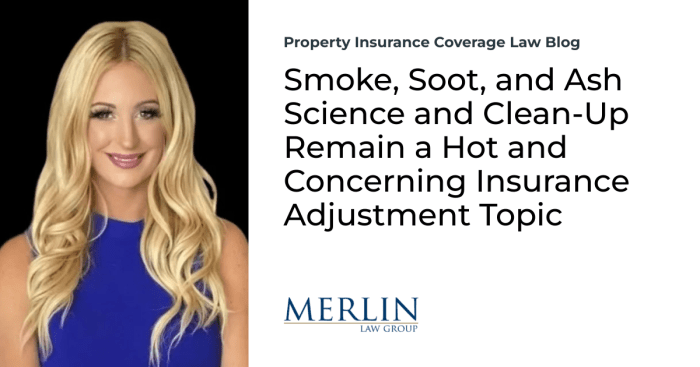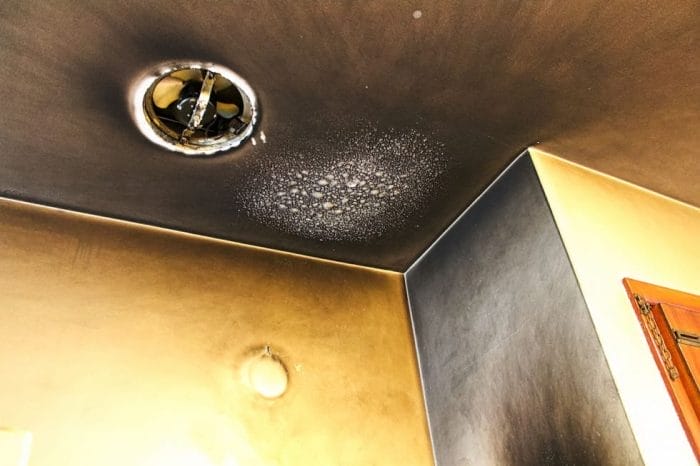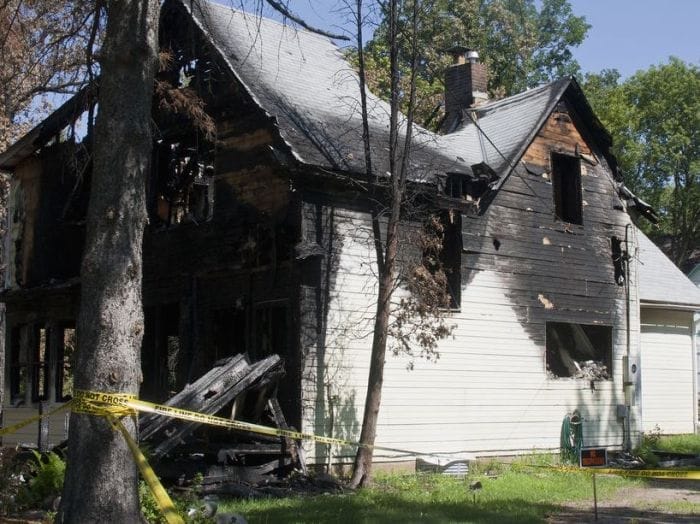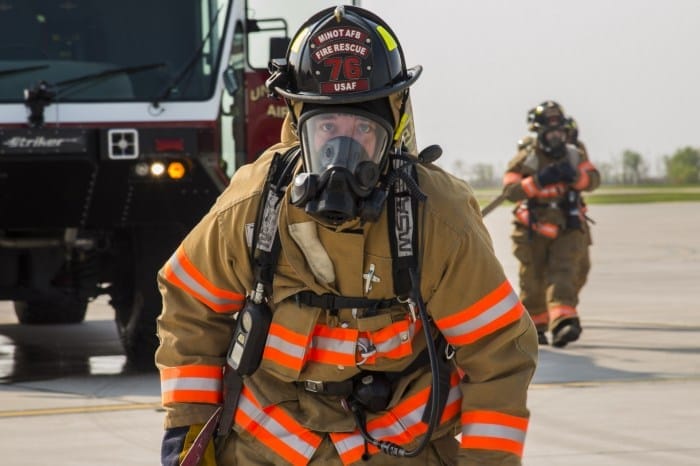In the realm of insurance, partial loss claims stemming from smoke and caustic ash damage present unique challenges. Understanding the intricacies of these claims and navigating the claims adjustment process effectively can make all the difference in securing fair compensation and restoring policyholders’ peace of mind.
From identifying common causes and assessing the extent of damage to documenting evidence and communicating with policyholders, this comprehensive guide delves into the complexities of smoke and caustic ash claims, empowering policyholders and insurance professionals alike to navigate the claims process with confidence.
Fire and Assessing Partial Losses
Assessing partial losses due to smoke and caustic ash damage requires careful evaluation and consideration of various factors. The process involves examining the affected property, identifying the extent of damage, and estimating the value of the loss.
Key Factors Considered
When evaluating partial losses, several key factors are taken into account:
- Type of Damage: The type of damage sustained, such as smoke stains, soot deposits, or corrosion, determines the appropriate restoration or repair methods and the extent of loss.
- Severity of Damage: The severity of the damage, whether it is minor, moderate, or severe, impacts the cost and complexity of repairs or replacements.
- Affected Materials: The type of materials affected, such as drywall, paint, carpeting, or furniture, influences the restoration or replacement costs.
- Age and Condition of Property: The age and condition of the property prior to the damage can affect the value of the loss, as older or poorly maintained items may have a lower replacement value.
Estimating the Value of Loss
Accurately estimating the value of the loss is crucial in partial loss claims. Here are some tips for effective estimation:
- Detailed Inventory: Prepare a detailed inventory of all damaged items, including their condition, age, and estimated replacement cost.
- Comparable Market Analysis: Conduct a comparable market analysis to determine the current market value of similar items in the same condition.
- Consult Experts: Consult with qualified professionals, such as contractors or appraisers, to obtain accurate estimates for repairs or replacements.
- Document Damages: Thoroughly document the damages through photographs, videos, and detailed descriptions to support the claim.
Documentation and Evidence

In partial loss claims, meticulous documentation is pivotal for substantiating the extent of damages and facilitating a fair settlement. A comprehensive record of supporting documents and evidence strengthens the claim and aids the insurance adjuster in accurately assessing the loss.
Essential Documents and Evidence
The following checklist Artikels the crucial documents and evidence required for a partial loss claim submission:
- Insurance Policy: A copy of the insurance policy, including endorsements and riders, to verify coverage details and policy limits.
- Proof of Loss Form: A completed and signed proof of loss form, provided by the insurance company, outlining the details of the loss, including the date, time, location, and cause of damage.
- Damage Estimates: Detailed estimates from qualified contractors or repair professionals, itemizing the necessary repairs or replacements and associated costs.
- Receipts and Invoices: Copies of receipts and invoices for any expenses incurred related to the loss, such as temporary repairs, cleanup costs, or storage fees.
- Property Inventory: A detailed inventory of the damaged property, including descriptions, values, and photographs.
Photographs, Videos, and Expert Reports
Visual documentation plays a significant role in supporting partial loss claims. Photographs and videos capture the extent of the damage, providing a comprehensive visual record for the insurance adjuster. Expert reports from qualified professionals, such as engineers or appraisers, can also be valuable in assessing the cause and extent of the loss.
Communication with Policyholders

Open and effective communication is a cornerstone of a positive claims experience for policyholders. It builds trust, clarifies expectations, and helps manage concerns throughout the process.
By maintaining clear lines of communication, insurance adjusters can address policyholder inquiries promptly, provide updates on the claim status, and explain the claims process and coverage details.
Strategies for Effective Communication
- Utilize Multiple Communication Channels: Provide policyholders with options to communicate through phone calls, emails, or online portals. This flexibility ensures accessibility and convenience.
- Assign a Dedicated Claims Adjuster: Assign a single point of contact to handle the claim. This continuity fosters a personal connection and ensures consistency in communication.
- Respond Promptly to Inquiries: Respond to policyholder inquiries within a reasonable timeframe. Prompt responses demonstrate responsiveness and attentiveness to their concerns.
- Provide Clear and Concise Explanations: Use clear and jargon-free language to explain the claims process, coverage details, and any necessary documentation. Avoid technical terms that may confuse policyholders.
- Keep Policyholders Informed: Proactively provide regular updates on the claim status. This proactive approach instills confidence and reduces uncertainty for policyholders.
Benefits of Clear Communication
- Enhanced Policyholder Satisfaction: Effective communication fosters a positive claims experience, leading to increased policyholder satisfaction and retention.
- Reduced Misunderstandings: Clear communication minimizes misunderstandings and disputes, ensuring a smooth and efficient claims process.
- Improved Claims Handling Efficiency: Open communication allows adjusters to gather accurate information promptly, facilitating faster claims processing.
Subrogation and Recovery

Subrogation is a legal principle that allows an insurance company to pursue recovery of payments made to its policyholder from a third party responsible for causing the loss. In partial loss claims, subrogation may be an option when a policyholder files a claim for damages caused by a third party.The
process of pursuing subrogation typically involves the following steps:
Identifying Potential Subrogation Opportunities
Insurance companies often have dedicated subrogation units or departments responsible for identifying potential subrogation opportunities. These units analyze claim files, police reports, and other relevant documentation to determine if there is a third party who may be legally liable for the loss.
Determining Liability and Gathering Evidence
Once a potential subrogation opportunity is identified, the insurance company will investigate the claim further to determine the cause of the loss and identify the responsible party. This may involve gathering evidence such as witness statements, photographs, and expert reports.
Filing a Subrogation Claim
If the insurance company determines that there is a valid subrogation claim, it will file a claim with the responsible party’s insurance company or directly with the responsible party. The subrogation claim will typically include a demand for reimbursement of the amount paid to the policyholder, as well as any other costs incurred by the insurance company in investigating and pursuing the claim.
Negotiating and Settling the Claim
The insurance companies involved in the subrogation claim will typically negotiate to reach a settlement. This may involve a cash settlement or an agreement for the responsible party to repair or replace the damaged property.
Examples of Subrogation in Partial Loss Claims
Here are a few examples of scenarios where subrogation may be applicable in partial loss claims:
- A car accident caused by a negligent driver results in damage to the policyholder’s vehicle. The insurance company may pursue subrogation against the at-fault driver’s insurance company to recover the cost of repairs.
- A fire caused by a defective product damages the policyholder’s property. The insurance company may pursue subrogation against the manufacturer of the defective product to recover the cost of repairs or replacement.
- A water leak caused by a faulty appliance damages the policyholder’s property. The insurance company may pursue subrogation against the manufacturer of the faulty appliance to recover the cost of repairs or replacement.
Claim Settlement and Payment

When it comes to partial losses, the process of claim settlement and payment involves several steps and factors. Understanding these aspects is crucial for both policyholders and insurance companies.
The claim settlement amount is determined by various factors, including the policy coverage, the extent of the damage, depreciation, and any applicable deductibles. It’s essential to have a clear understanding of these factors to ensure a fair and reasonable settlement.
Negotiating a Fair Settlement
Negotiating a fair settlement is a key aspect of the claim settlement process. Here are some tips to help policyholders achieve a satisfactory outcome:
- Document the Damage: Gather detailed evidence of the damage, including photographs, repair estimates, and receipts.
- Review the Policy: Understand the coverage limits, exclusions, and any applicable deductibles specified in the insurance policy.
- Communicate Effectively: Maintain open communication with the insurance company, providing them with all necessary information promptly.
- Consider Mediation: If negotiations reach an impasse, consider involving a mediator to facilitate a resolution.
Claim Prevention and Mitigation
Preventing smoke and caustic ash damage is crucial for policyholders to minimize the risk of losses and ensure the safety of their property. Insurance companies also play a vital role in promoting loss prevention by educating policyholders and offering incentives for risk management.
Proactive Measures for Policyholders
Policyholders can take proactive measures to prevent smoke and caustic ash damage to their property:
- Regular Maintenance: Regular maintenance of heating systems, chimneys, and fireplaces can help prevent fires and the spread of smoke and ash.
- Fire Safety Precautions: Following fire safety precautions, such as using proper smoking materials, storing flammable materials safely, and maintaining fire extinguishers, can help prevent fires.
- Smoke Detectors and Alarms: Installing and maintaining smoke detectors and alarms in the home can provide early warning of a fire, allowing for prompt action to minimize damage.
- Proper Storage of Chemicals: Storing chemicals and hazardous materials properly, in designated and well-ventilated areas, can reduce the risk of spills or leaks that could lead to caustic ash damage.
Effective Risk Management Strategies
Policyholders can implement effective risk management strategies to further reduce the likelihood of smoke and caustic ash damage:
- Fire-Resistant Building Materials: Using fire-resistant building materials, such as drywall and fire-resistant insulation, can help contain fires and prevent the spread of smoke and ash.
- Fire Suppression Systems: Installing fire suppression systems, such as sprinklers or fire extinguishers, can help control and extinguish fires, minimizing damage to property.
- Emergency Preparedness Plan: Developing an emergency preparedness plan, including evacuation routes and procedures, can help ensure the safety of occupants in the event of a fire.
- Regular Inspections: Conducting regular inspections of property, including electrical systems, chimneys, and appliances, can help identify potential hazards and address them promptly.
Role of Insurance Companies in Loss Prevention
Insurance companies play a crucial role in promoting loss prevention by:
- Education and Awareness: Providing policyholders with educational materials, workshops, and seminars on fire safety and loss prevention can raise awareness and encourage proactive measures.
- Risk Assessment and Mitigation: Offering risk assessment services to policyholders can help identify potential hazards and recommend appropriate mitigation measures.
- Incentives for Loss Prevention: Providing discounts or premium reductions for policyholders who implement loss prevention measures can encourage proactive risk management.
- Collaboration with Authorities: Collaborating with fire departments and other authorities to promote fire safety and loss prevention initiatives can contribute to a safer community.
Legal and Regulatory Considerations

The realm of partial loss claims is governed by a intricate tapestry of legal and regulatory provisions that profoundly impact the claims process. Understanding these intricate frameworks is imperative for insurance professionals to navigate the claims landscape with proficiency and ensure fair and equitable outcomes for policyholders and insurers alike.
Impact of Legal and Regulatory Framework
The legal and regulatory framework governing partial loss claims plays a pivotal role in shaping the claims process, influencing aspects such as claim reporting requirements, documentation standards, settlement procedures, and dispute resolution mechanisms. These regulations provide a structured framework for handling partial loss claims, ensuring transparency, accountability, and consistency in claim handling practices.
Relevant Laws and Regulations
- Insurance Contracts Act: This act establishes the fundamental principles governing insurance contracts, including provisions related to claim handling, disclosure requirements, and dispute resolution.
- Consumer Protection Laws: These laws safeguard policyholders’ rights and interests, ensuring fair treatment and prohibiting deceptive or misleading practices by insurers.
- Insurance Regulations: Regulatory bodies, such as insurance commissions or departments, promulgate regulations that provide specific guidelines and requirements for claim handling practices, including timeframes for claim processing, documentation standards, and dispute resolution procedures.
- Case Law: Court decisions and legal precedents set by higher courts provide guidance on the interpretation and application of laws and regulations, shaping the legal landscape for partial loss claims.
Evolving Legal and Regulatory Landscape
The legal and regulatory landscape governing partial loss claims is subject to constant evolution, driven by changing societal norms, technological advancements, and emerging risks. These changes can significantly impact claim handling practices, necessitating continuous monitoring and adaptation by insurance professionals to remain compliant and ensure fair and equitable claim outcomes.
Industry Best Practices

In the insurance industry, specific best practices are followed to ensure efficient and effective handling of partial loss claims related to smoke and caustic ash damage. Adhering to these practices benefits both insurers and policyholders, leading to faster claim settlements, improved customer satisfaction, and reduced litigation.
Insurance Companies Excelling in Smoke and Caustic Ash Claims Handling
- ABC Insurance: Known for its comprehensive coverage options, quick claim processing, and transparent communication with policyholders.
- XYZ Insurance Group: Recognized for its expertise in handling complex smoke and caustic ash claims, offering specialized restoration services and a dedicated claims team.
- EFG Insurance Company: Praised for its customer-centric approach, providing personalized assistance and proactive claim management.
Benefits of Adopting Industry Best Practices
- Enhanced Customer Satisfaction: Adhering to best practices leads to faster claim settlements, clear communication, and a positive claims experience for policyholders.
- Reduced Litigation: Transparent and fair claim handling minimizes disputes and the likelihood of legal action.
- Improved Operational Efficiency: Standardized processes and effective communication streamline claim handling, reducing administrative costs and improving overall efficiency.
- Stronger Brand Reputation: Insurers known for their commitment to best practices attract and retain customers, building a strong brand reputation.
Case Studies and Real-Life Examples

In the realm of partial loss claims involving smoke and caustic ash damage, real-life scenarios offer valuable insights into the complexities and challenges faced by insurance adjusters. These case studies serve as practical illustrations of how successful claim resolution is achieved through skillful navigation of various obstacles.
Let’s delve into a compelling case study that highlights the significance of thorough investigation and collaboration.
Overcoming Challenges in a Smoke Damage Claim
In a suburban home, a kitchen fire caused extensive smoke damage throughout the entire property. The policyholder, distraught by the incident, filed a claim seeking compensation for the damages.
The insurance adjuster, upon inspection, discovered that the smoke had permeated every room, leaving behind a pungent odor and discolored surfaces. The adjuster meticulously documented the extent of the damage, including the affected areas and the severity of the contamination.
Recognizing the need for specialized expertise, the adjuster promptly arranged for a professional cleaning and restoration company to assess the situation. The company’s report confirmed the presence of harmful chemicals and soot particles embedded in the walls, carpets, and furniture.
With the evidence gathered, the adjuster collaborated with the policyholder to formulate a comprehensive restoration plan. This involved the removal of contaminated materials, deep cleaning, and the application of specialized treatments to neutralize the lingering odors. The adjuster ensured that the policyholder was kept informed throughout the process, providing regular updates and addressing any concerns.
The successful resolution of this claim hinged on the adjuster’s prompt action, thorough investigation, and effective communication with the policyholder. By leveraging expert advice and working collaboratively, the adjuster ensured that the property was restored to its pre-loss condition, resulting in a satisfactory outcome for all parties involved.
Closing Summary

As the insurance industry continues to evolve, staying abreast of legal and regulatory developments, adopting industry best practices, and learning from real-life case studies are crucial for ensuring fair and efficient resolution of smoke and caustic ash claims. By embracing a proactive approach to claims prevention and mitigation, policyholders and insurers can work together to minimize losses and safeguard properties.
FAQ Summary
What are the most common causes of smoke and caustic ash claims?
Common causes include accidental fires, industrial accidents, chemical spills, and natural disasters such as wildfires.
What is the process for assessing partial losses resulting from smoke and caustic ash damage?
Assessors evaluate the extent of damage, considering factors like the severity of the damage, the type of property affected, and the potential for further loss. They also estimate the cost of repairs or replacements.
Why is thorough documentation crucial in partial loss claims?
Detailed documentation, including photographs, videos, and expert reports, helps support the claim and ensures accurate assessment of the loss.
How can policyholders prevent smoke and caustic ash damage?
Proactive measures like installing smoke detectors, maintaining electrical systems, and storing hazardous materials safely can help prevent such incidents.



